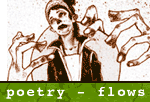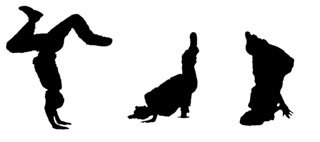 |
||||||||||
 |
 |
 |
 |
 |
 |
 |
 |
 |
| Time for a Dance Dance
Revolution by Min Lee November 21, 2001
I must admit when I first saw DDR I thought it was just another video game but there's a lot more to it than just arrows and dancing -- DDR has brought video games into dance culture. That's the revolutionary part of Dance Dance Revolution. Lights flash from the top and music bumps from the speakers at the bottom of this walk-in arcade game. Arrows point in one of four directions scrolling up the screen until it aligns with the outlines on top. At that moment, the dancer has to step on the corresponding arrows on the floor pad. Looks simple enough. Now imagine two arrows at the same time, then a sequence of four making a circle, then a sequence of eight alternating arrows. For the length of the song there will be more than a thousand arrows scrolling across the screen. Since 1998, DDR has been manufactured by the Japanese company Konami. The game was wildly popular in Asia before it hit American shores. You can find sites dedicated to DDR all over the internet. One of the most popular is ddrfreak.com At arcades like Albany Bowl, The Bearcade in Berkeley, and The Sony Meteron in San Francisco, crowds of mostly teens and young adults gather to watch the Dance Dance revolutionaries do their thing. You can even find some of the observers shadowing the players' moves, as if they were on the pad themselves. When dancers are new to the game you can tell. Beginners are usually just stepping and not really dancing. After they know the steps they start getting creative. Combining dancing talent and game familiarity, a select few graduate to creating their own styles. These are the stylers. When they get on the pad, all hell breaks loose. You might see people C-walking, breaking, raving, flipping, and so on. Katie, 16, who plays once or twice a week, has seen stylers "...that jump in circles, or hit the pads with their knees. Times like that you'll have to look over people's shoulder to see what's going on." Adam, 18, who's been playing DDR for two years, observes, "After like you finish the game and everybody starts clapping it's like, 'Damn, I'm hella good.'" Watching is how people usually get into this game. "They just sort of watch like it's something they haven't seen before," says Ryan, 16. "It seems that more people get interested as they see people do it. I've seen DDR around for about a year and it's grown into a trend, or even part of a culture. Competitions are being held, the machines are popping up everywhere, prices are going up in some places, and more people watch every time someone good plays." Some patrons of this game are at the arcades more than three times a week getting their style down. Even people who own the game on Sony Playstation or Sega Dreamcast continue to go to the arcades to show off new moves in front crowds. Why does DDR attract so many people? It's unlike other video games. Jason, 19, who plays two or three times a week says "It isn't just sitting down and watching a TV screen, you have to move around." The dancing and the upbeat music put DDR right into center of teen dance culture. It's got techno, trance, rave, hip hop, and lots of other types of music in the different mixes. With more mixes emerging, DDR is evolving into a culture. There's music for people to C-walk to and music for people to rave to. This interactive dance craze doesn't look like it's ending anytime soon. Zeid, 18, a frequent DDR dancer believes "the whole dance culture is gonna keep going and DDR is part of that dance culture." GLOSSARY http://www.youthoutlook.org/stories/2001/11/21/time.for.a.dance.dance.revolution.html |
Email Us: crew@youthoutlook.org. Call us: 415.438.4755 | FAX: 415.438.4935 Home | About | Archives | Gallery | Submit | Outreach | Subscribe | E-Graffiti | Chat | Search | YO! Wire | Audio | Video | Poetry This website is optimized for a display size of 800x600 and above on browsers version 4.0+. Design by favianna de ten.12 Copyright ©2000 Youth Outlook. No biting without consent. |
